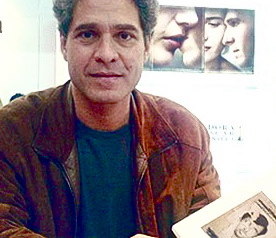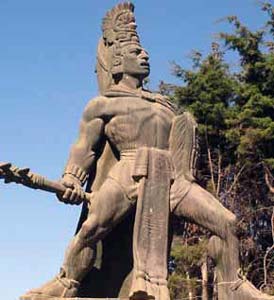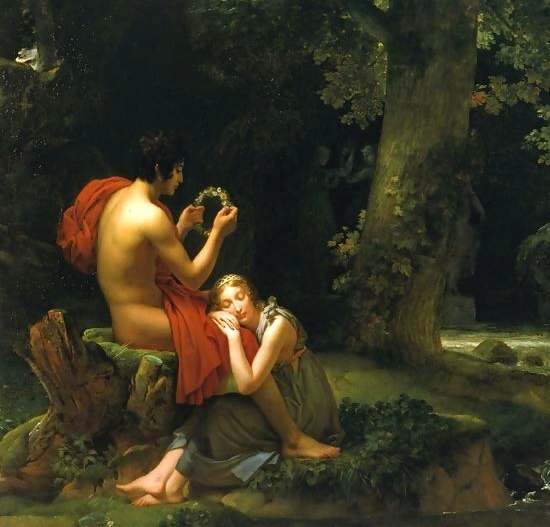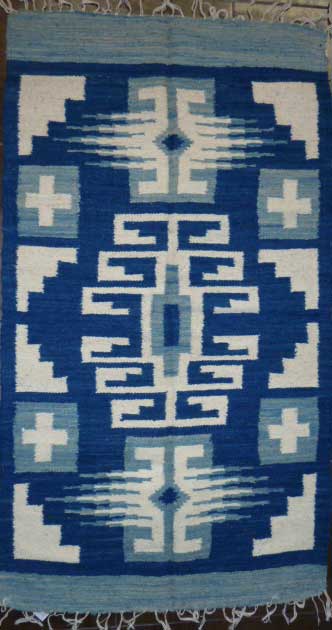Note: In 2004, Rodrigo Rey Rosa was WINNER of Guatemala’s Miguel Angel Asturias National Literature Prize.
“One of my uncles…believed that books…are animated by a kind of collective spirit…He talked about how books struggle for domination in certain regions of the planet, a phenomenon whose trends and flows could be tracked…There are wars between different kinds or genres of books, he said. And, as in real wars, the best don’t always win; but for us, in the end, there are no losers, although they all fade away…” –Otto Blanco, grandfather of Ana, the book thief.
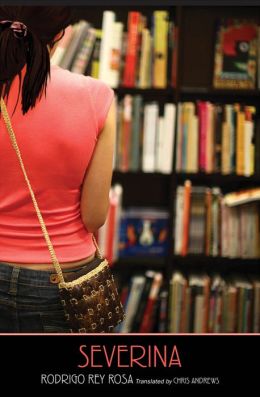 In this consummate homage to books, Guatemalan author Rodrigo Rey Rosa introduces the unnamed owner of a bookstore in Guatemala – a commercial rarity, he points out – before moving on to describe the bookseller’s life, the books he enjoys, his book-loving friends, and, ultimately the book thief who haunts his store and with whom he has fallen in love. Writing in clear language without fanciful flourishes, Rey Rosa tells a classic story of love and loss and life and death, and those looking for a simple love story with unusual characters in an exotic setting will be amply rewarded as they meet and follow Severina, the novel’s beautiful and unusual “heroine.”
In this consummate homage to books, Guatemalan author Rodrigo Rey Rosa introduces the unnamed owner of a bookstore in Guatemala – a commercial rarity, he points out – before moving on to describe the bookseller’s life, the books he enjoys, his book-loving friends, and, ultimately the book thief who haunts his store and with whom he has fallen in love. Writing in clear language without fanciful flourishes, Rey Rosa tells a classic story of love and loss and life and death, and those looking for a simple love story with unusual characters in an exotic setting will be amply rewarded as they meet and follow Severina, the novel’s beautiful and unusual “heroine.”
The novel is far deeper than that, however. It is also a complex meditation on books and why people read them; on the value of libraries, both public and private; and on how books contribute to the very essence of life for cultures, societies, and individuals.
Author Rodrigo Rey Rosa’s personal world extends far beyond Guatemala, literally and figuratively. He worked for years in Morocco with author Paul Bowles while translating Bowles’s novels into Spanish, a professional agreement which worked both ways, with Bowles also translating Rey Rosa’s novels into English. A voracious reader with serious interests in history, philosophy, metaphysics, and novels of all genres, from classical epics and adventure stories to fantasies and satires, Rey Rosa is clearly having fun as he writes this intriguing and unusual love story, while also providing insights into the entire literary canon. His tastes, as we see them here, are eclectic, ranging from Galland’s translation of The Thousand and One Nights (1704 – 1715), to books on Russian travel, William Faulkner’s Wild Palms, Jorge Reichmann’s Conversations Between Alchemists, Thomas Raucat’s The Honorable Picnic, various Japanese writings, philosophical treatises, and eventually, Samuel Butler’s The Way of All Flesh. A single major presence reigns over the whole novel, however – that of Argentinian author Jorge Luis Borges, whose ideas and works permeate every aspect of the action.
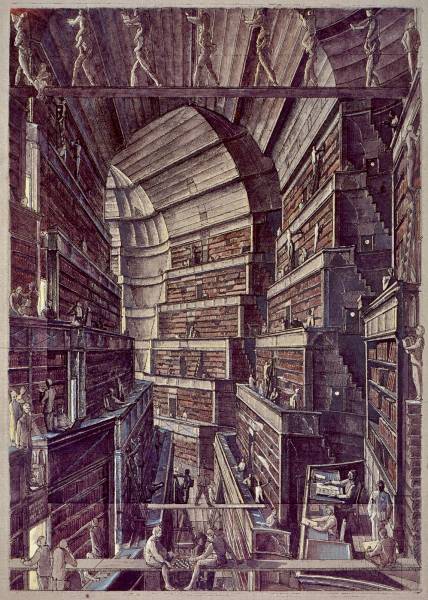
Contemporary artist Erik Desmazieres (b. 1948) has created a series of etchings of Borges's Library of Babel. Click once on picture to go to site, and when there, click once again to see an enlargement. Amazing!
The narrator of Severina, a writer and part owner of a shop called La Entretenida (meaning “entertaining”), first sees Ana when she attends a reading at his shop, and he knows instinctively that he will see her again. When she attends a second reading, however, he sees her slip two small books of Japanese literature into her bag. (“The speed of it was impressive.”) He says nothing. When she returns a couple of weeks later, looking for a book for a “boyfriend,” he suggests some new books in the Japanese literature section. “It’s over there. As you know.” When she leaves, he discovers that she has now taken a volume of Galland’s The Thousand and One Nights, from 1704. Weeks later, when he finally confronts her with a list of everything she’s stolen, she produces the items she has hidden in her clothing that day but suggests that they just “forget” the ones she has stolen previously. He prefers to regard her theft as an “outstanding debt, a personal loan from me to you.” He is smitten, and he begins to pursue her, “embarking on a purely sentimental adventure…for the first time in my life.” Eventually, he discovers the pension where she lives with a mysterious, elderly man, alternately referred to as her father, her husband, and her grandfather.
Exotic references, some of them historical and some literary, continue as the bookseller becomes more and more obsessed with Ana and as she continues to help herself to his books. The narrator knows nothing about where Ana comes from, being unable to place her accent. When she runs off, at one point, the narrator follows her, only to discover that she is going to the airport, where he sees her with a rival bookseller, Ahmed al Fahsi, a Moroccan from whom she has also stolen many books. Ironically, the narrator is standing near the statue of Tecun Uman, “the hero of our national history in spite of the fact that he didn’t [really] exist.” In that respect Tecun Uman might well resemble Ana, whose family name, “Blanco,” means white, or blank. While she is away, he makes lists of all the books she has taken, hoping “this would help solve the mystery of a life that seemed bizarre and fantastic to me.” He likes to believe that her mania for books, “those quivering, murmuring creatures,” is associated with “an uncompromising approach to life: absolute freedom, a radical realization of the ideal of living by and for books.”
Reality and fantasy begin to overlap for the narrator upon the return of Ana and her grandfather from Latin America, as his dreams/nightmares begin to confuse him. Even the sirens of ambulances begin to suggest deeper meanings: “For a moment the sound of the siren – which was all I could hear – reminded me of the original sirens, who had the bodies of birds, not fish, and whose song led men to their ruin. The incoherent images that tumbled through my mind left me thinking that the idea of love that comes down to us from the Romantics, who associated it with death and sometimes with the devil, was too gloomy to be credible.” Thinking of the story of Daphnis and Chloe, the romance described by second century Greek novelist Longus, the narrator hopes for a happy ending to his own “romance.” At the same time, Ana is telling him about getting inside Borges’s library for three weeks in 1999, though she swears that she did not take anything. “I did not dare.” Soon Samuel Butler’s The Way of All Flesh is inspiring the narrator to think about making some big changes in his life.
The conclusion solves the requirements of the plot with great flair, once again with the “help” of Borges and the imagery associated with him. Irony takes on new meanings, leaving the reader with a smirk, if not a smile. Clever and thoughtful (though self-conscious and sometimes precious), Rey Rosa proves that it is possible to create a BIG novel in remarkably few words and do it on many levels at once, satisfying the reader on all levels. Life and death, love, and books. Who could ask for more?
Also by Rey Rosa: THE AFRICAN SHORE
Photos, in order: The author’s photo is from RCN Radio: http://caravanaderecuerdos.blogspot.com
The amazing etching by Erik Desmazieres (contemporary, born 1948), to illustrate Borges’s “The Library of Babel” may be seen in more detail here. http://benedante.blogspot.com Or click on the photo once, then when the page opens, click on the photo there once again.
Tecun Uman, a mythical warrior, is the national “hero” of Guatemala, though he never existed. http://ljhsjblike.pbworks.com
The painting of Daphnis and Chloe, consummately romantic, is by French painter Baron Francois Gerard, and symbolizes for the narrator’s growing feelings for Ana. http://www.1st-art-gallery.com/
Momostenango rugs, typical of the traditional, hand-made rugs of the Mayans in Guatemala for thousands of years. http://www.coloresdelpueblo.org These rugs by indigenous people decorated the rooms at the pension where Ana lived.
ARC: Yale University Press
